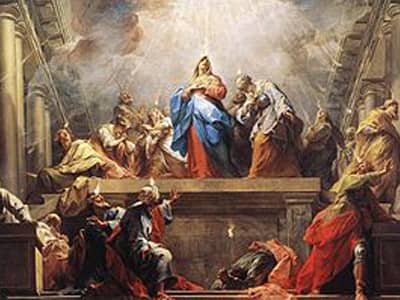
Shutterstock.com
Known properly as the Yamim Noraim, or the Days of Awe, there are two holidays that are considered to be the most important in Judaism. These Days of Awe, more commonly called High Holy Days are Yom Kippur, the Day of Atonement, and Rosh Hashanah, the Jewish New Year. Proper recognition and celebration of these festivals is very important to Jews all over the world.
Rosh Hashanah comes from the Hebrew words rosh, ha and shanah. Rosh means “head,” and shanah means “year.” As such, Rosh Hashanah literally translates to “the head of the year.” This makes sense as Rosh Hashanah is one of the new years in Judaism. Traditionally, there were several years taking place simultaneously in Judaism. There was a calendar that indicated the years the king had been reigning and one that dealt with the start of the year for the three Jewish pilgrimages. Rosh Hashanah indicated the start of a new year that mattered greatly to the average Jew in ancient times as Rosh Hashanah was the beginning of a new year for people, animals and legal contracts.The Jewish New Year is said to represent the beginning of the first year of all time as well. The day is associated with God’s creation of the world out of nothing. This, at least, is the most common view of the holiday, though some hold that Rosh Hashanah is not associated with the first act of creation. Instead, they claim, it is the date of God’s creation of Adam.
As Rosh Hashanah comes from the ancient Israelites, it follows the beginning of the economic year in the agricultural societies in the ancient Middle East. Semitic peoples tended to start their years in autumn when crops were being reaped. This set them apart from many other civilizations which placed their new year in the spring when the seeds were first sewn.
The harvest did not always come at the exact same time, so ancient Jews relied on their calendar to tell them when the old year ended and a new one began. Their calendar, however, was rather different from the Gregorian calendar used in much of the modern world today. The Gregorian calendar is a solar calendar. It tracks time based on days and movements of the sun. The Jewish calendar, however, is based largely on a lunar calendar. It relies, rather obviously, on the phases and movements of the moon.
Like the Gregorian calendar used today, the ancient Jewish calendar was divided up into 12 months. The months on the Jewish calendar, however, only lasted 29 days, though some diaspora communities counted months as 30 days long. The 29 days was determined to be the average length of time it took for the moon to complete an entire cycle of phases.
As every month in the Jewish calendar is shorter than the months in the Gregorian calendar by a day or two, Jewish months and festivals appear to move around. The dates of the holidays stay the same on the Jewish calendar, but as the Gregorian calendar is 11 days longer than the Jewish calendar, those dates do not line up every year.
Unlike Muslim holidays, Jewish holidays tend to fall around the same time every year. Passover normally falls in late March or early April on the Gregorian calendar, and Rosh Hashanah tends to take place in the Gregorian months of September or October. This is because the Jewish calendar, while largely based on the phases of the moon, is technically a mixed solar-lunar calendar based on the ancient Mesopotamian lunisolar calendar. As such, the Jewish calendar adds an extra month every few years to bring the total number of months up to 13. This shifts the holidays back and keeps them from moving too far away from the agricultural and seasonal events around which they are based. When compared against the Gregorian calendar, the addition of the extra month in the embolismic or intercalated year keeps Jewish holidays within a few weeks of the same date every year instead of them drifting slowly to take place earlier and earlier in the year until what was once an autumn festival takes place in spring.
The month that Rosh Hashanah kicks off is commonly called Tishrei, though 1 Kings refers to it as Ethanim. For the month before Rosh Hashanah, Elul, Jews are meant to spend time in self-reflection and repentance to prepare for the holiest days of the year. The ten days of Yamim Nora’im begin with Rosh Hashanah and culminate with Yom Kippur. Tradition has it that on Rosh Hashanah, also occasionally referred to as Yom Hadin or Judgement Day, God opens three books of divine judgement. The first book is meant for the righteous, the second for the evil and the third for those living with non-evil sins. The people who fall in the third category are meant to spend the 10 days between Rosh Hashanah and Yom Kippur repenting of their sins so that they may be granted a place in the book of life on Yom Kippur.
Though it may seem like it, Rosh Hashanah never actually moves. The date of this High Holy Day remains the same on the Jewish calendar every year, and it is the Jewish calendar the holiday was originally based upon. The illusion of movement results from the solar Gregorian calendar and lunisolar Jewish calendar failing to line up perfectly. As such, Rosh Hashanah appears within a few weeks of the same date every year but not the same exact day. Thankfully for all of those who need to repent before Yom Kippur, the 10 days between the two holidays remains intact regardless of what calendar a person is using.

